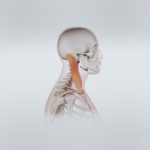This week we will examine the third and fourth limbs of the eight limbs of yoga in an effort to create awareness within the Krav Maga community about the powerful benefits of yoga within our self-defense and self-mastery context.
Asana: These are the functional movements or “poses” which most westerners think of when they think of Yoga. Have you ever attended a yoga class and it seemed as if every student was trying his/her hardest to fold into the most intense version of a pose? This subtle competition, unfortunately, is where many practitioners miss the point. While it is possible to obtain the physical strength and flexibility to achieve the most advanced arm or head balances, there is a major form-function issue with the approach many students take onto their mat.
The quality of an asana is not strictly physical form, the benefits of yoga reach far beyond this! These benefits include physiological, emotional, and spiritual qualities. Asana’s ironically have less to do with external abilities and more to do with an internal experience that produces a stronger and more flexible body because of more balanced energy, a more open heart, and a clearer awareness.
Postures should help reveal something about our personal condition, and it is imperative that the practitioner is setting appropriate goals that are in alignment with achieving the full benefits of the pose. The discipline to “check the ego at the door” (just as it is in Krav Maga), produces far more substantive results for every practitioner who seeks to reap the full benefits of the experience.
Pranayama: Breath control. The ability to control the breath during practice is perhaps the best teacher of the deepest principles of yoga.
All movements and asanas of yoga should be guided by the breath. Regardless of the mechanical possibilities of the body, it is the breath where the Warrior finds profound evolution in their practice (breath control produces awareness, calm, and focus – the essentials of the Krav Maga warrior).
The mechanics of breathing help mobilize the spine – the core of all movement. If a practitioner struggles to control the breath while completing an asana, the functional benefits mentioned earlier are not being obtained. The proper execution of asanas with the use of pranayama will also result in a sense of levity, clarity and tranquility.
A Warrior’s objective is dynamic exploration of asanas through pranayama. Nothing is forced. Each posture and movement is completed with complete conscious awareness of the entirety of the experience. The Warrior practitioner understands that the value of removing physical, emotional, and mental obstacles through productive practice far outweighs the bragging rights of achieving a mere physical facade. The Warrior is capable of expanding the influence of this concept throughout all aspects of life to find connection with the mind and the body – to live a more present and more fulfilling life.
Similarly, an effective Krav Maga student approaches class seeking the complete experience of physical, mental, and emotional growth. Anyone who has trained in Krav Maga for an extended period can affirm that the benefits far exceed one’s physical abilities to protect themselves and those they care about most. There are diverse personal histories and various physical limitations of individuals in every Krav Maga class, but it is those who choose to cultivate a mindset of intentional personal practice that will overcome those barriers and discover the true benefits of training both on and off the mats.
A Warrior seeks fulfillment through dedication to a complete and tangible experience on the yoga mat and in the Krav Maga classroom.





Christine Aguilar
Are your classes going to be just for those currently taking Krav Maga?